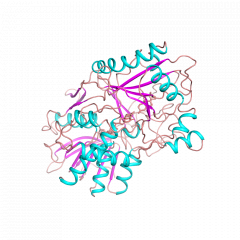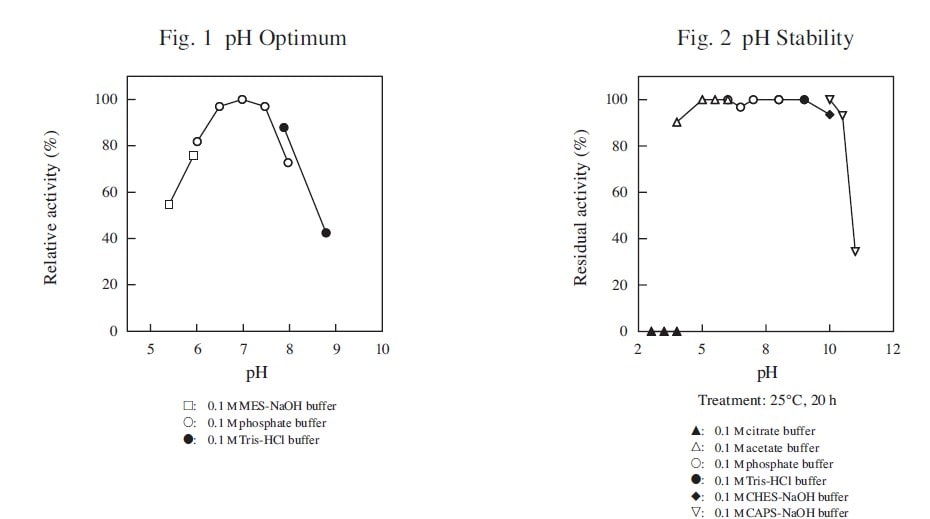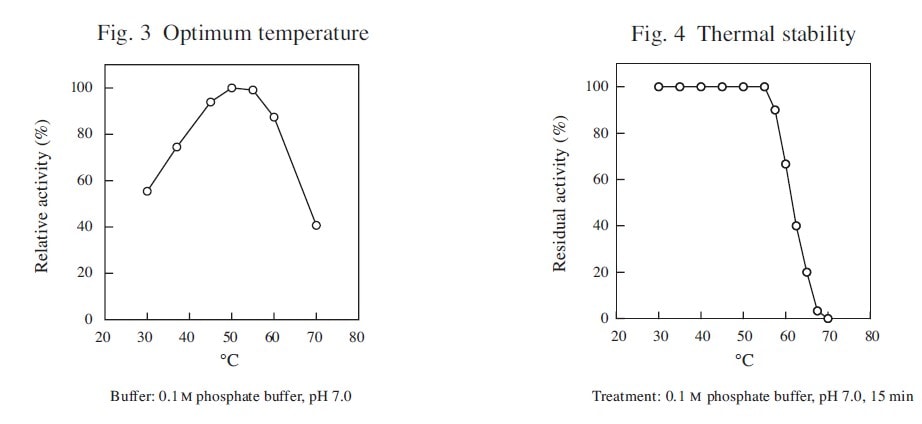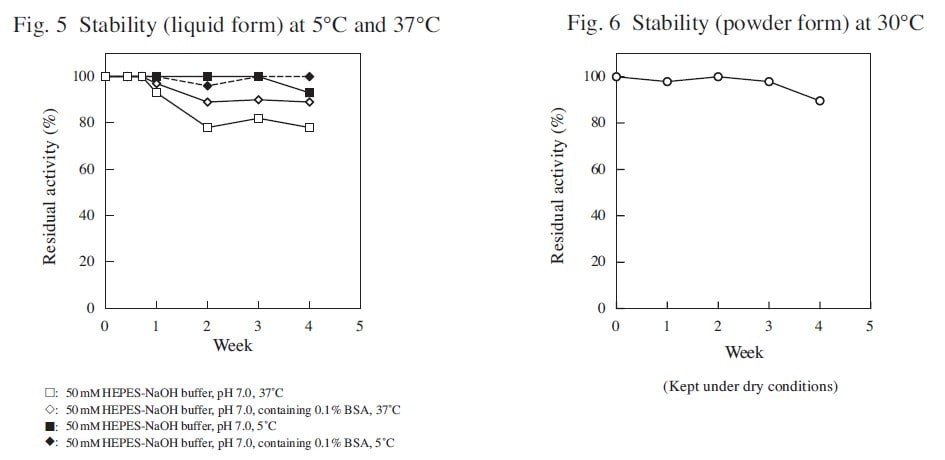
The enzyme is useful for the determination of cholesterol in clinical analysis.
| 由来 | recombinant E. coli |
|---|---|
| 系统名称 | Cholesterol : oxygen oxidoreductase |
| EC编号 | 1.1.3.6 |
| 反应式 | Cholesterol + O2 →→→ Cholest-4-en-3-one + H2O2 |

The enzyme is useful for the determination of cholesterol in clinical analysis.
| 由来 | recombinant E. coli |
|---|---|
| 系统名称 | Cholesterol : oxygen oxidoreductase |
| EC编号 | 1.1.3.6 |
| 反应式 | Cholesterol + O2 →→→ Cholest-4-en-3-one + H2O2 |
| Appearance | yellow lyophilizate | |
|---|---|---|
| Activity | ≧5 U/mg | |
| Stabilizer | trehalose,sodium malate, sodium glutamate, ethylenediaminetetraacetic acid (EDTA) | |
| Storage condition | below -20℃ protected from light |
| Molecular weight | ca. 58 kDa (gel filtration) |
|---|---|
| Structure | monomer of 55 kDa (SDS-PAGE) |
| Michaelis constant | 3.5×10-4 M (cholesterol) |
| pH Optimum | Ca. 7.0 |
| pH Stability | 5.0–10.0 |
| Optimum temperature | 50℃ |
| Thermal stability | below 55℃ |
| Stability (liquid form) | stable at 37℃ for at least one week |
| Stability (powder form) | stable at 30℃ for at least one month |
| Inhibitors | ionic detergents, Ag+, Hg2+ |
The enzyme is useful for the determination of cholesterol in clinical analysis.

The appearance of quinoneimine dye is measured spectrophotometrically at 500 nm.
One unit (U) is defined as the amount of enzyme which produces 1 μmol of hydrogen peroxide per min at 37℃ and pH 7.0 under the conditions described below.
Sample: dissolve the lyophilized enzyme to a volume activity of 0.1–0.5 U/ml with ice-cold enzyme dilution buffer (Reagent F).
| 2.55 ml | Potassium phosphate buffer | (Reagent A) |
|---|---|---|
| 0.20 ml | Cholesterol solution | (Reagent B) |
| 0.05 ml | 4-AA solution | (Reagent C) |
| 0.10 ml | Phenol solution | (Reagent D) |
| 0.10 ml | POD solution | (Reagent E) |
Activity can be calculated by using the following formula:
![]()
13.8 : Millimolar extinction coefficient of quinoneimine dye under the assay conditions (cm2/μmol)
1/2 : Factor based on the fact that 1 mol of hydrogen peroxide produces 1/2 mol of quinoneimine dye
df : Dilution factor
C : Content of cholesterol oxidase preparation in sample (mg/ml)


